In the enormous domain of equine heritage, Japanese horse breeds may not be generally recognized compared to their European and American equivalents. Still, their history is firmly embedded in the cultural fabric of Japan. Distinguished by their importance in Japanese art, mythology, and combat, these horses embody the essence of an ancient country. This research dives into the rich historical backdrop, the distinctive traits, and the present-day importance of Japanese horse breeds, allowing fans and equestrians alike a view into the intriguing equine tapestry of Japan.
The Evolution of Japanese Horse Breeds
The first trace of horses in Japan goes back to the Yayoi era (300 BC – 300 AD) when they were first brought to the archipelago. These horses, known as “daijobu” or “Yamato”, were presumably acquired from the Korean peninsula and China for military reasons. They were compact in stature and had a stocky build, making them excellent for transporting big loads and travelling over steep terrain. However, horse breeding wasn’t until the 8th century AD that it became an important component of Japanese society.
A Galloping through History: Japanese Horses Through the Ages
In the annals of time, horses have been essential in the development of human civilization, and Japanese equestrian history is no less interesting. The narrative of Japanese steeds began over a millennium ago when they were first brought to the archipelago—though the precise chronology and manner of their introduction remain buried in mystery. As beasts of burden, they played a vital role in moving goods and people, altering the entire geography of Japan. Later, they would accompany the samurai into combat, becoming the faithful companions of a privileged warrior class. This time provided the groundwork for the exalted standing of horses in Japanese culture, a devotion that survives to this day.
The Divine Horse in Mythology and Art
Mythology is intertwined into the fabric of Japanese society, and horses are no exception. They are hallowed in Shintoism, Japan’s traditional religion, as messengers of the gods. The fabled animal known as “kami-horse” was thought to possess heavenly powers and was typically represented with three eyes. The significance of horses in Shintoism is reflected in the yearly “yabusame” rite when archers on horseback display their abilities by firing arrows at wooden targets while galloping at great speeds. This historical custom is still maintained today and serves as a reminder of the strong spiritual link between horses and people in Japanese culture.
The Crest of Japanese Breeds: Eight Equine Gems
While Japan may not claim the overwhelming number of horse breeds that nations like the United States or Spain do, the types that it does have are historic and distinct. Here are eight diverse Japanese horse breeds, each with its attraction and significance:
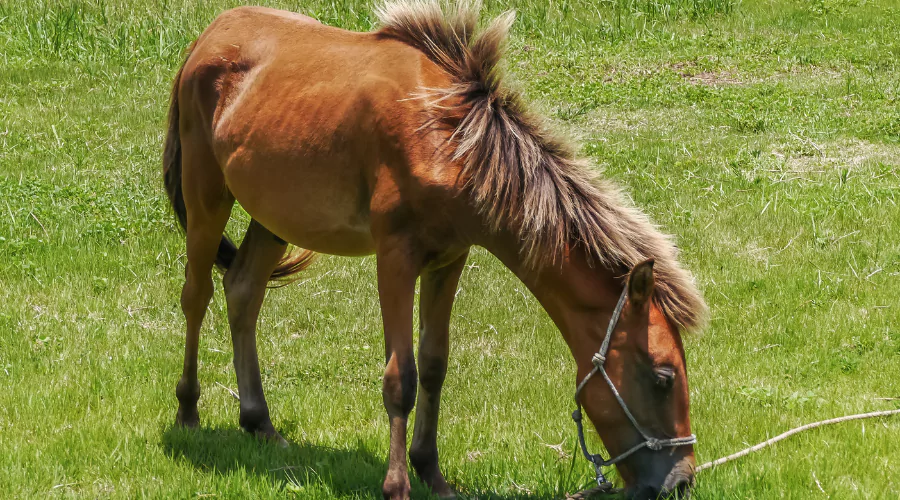
1. Yonaguni Horse Breed
The Yonaguni breed, from the southernmost Yonaguni Island, is recognized for its sure-footedness and agility. With a tiny, compact frame, it is best suited for the island’s rugged terrain. In recent years, the Yonaguni has encountered threats to its existence owing to a falling population and cultural movements away from traditional farming techniques that traditionally depended on these horses.
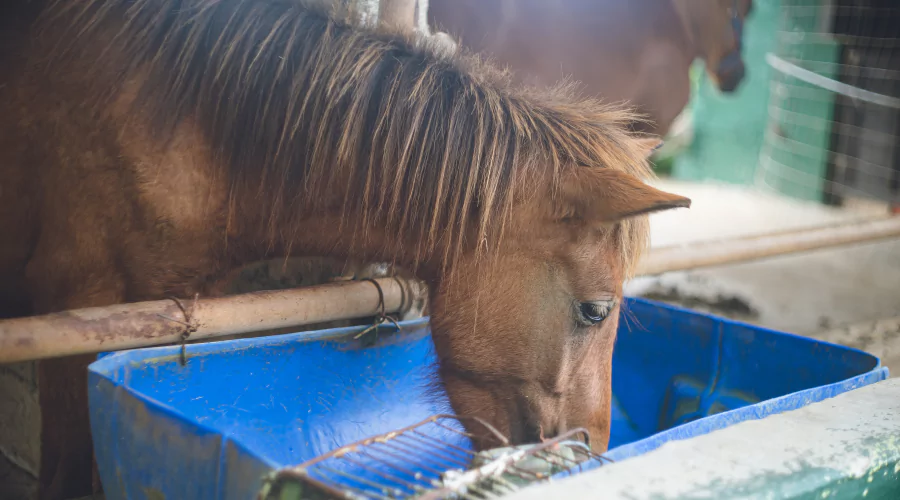
2. Miyako Horse Breed
Hailing from the Miyako Islands, the Miyako horse has the hardy character of the Yonaguni breed, suited to the islands’ circumstances. Miyako horses are celebrated for their presence in local festivals and are considered national treasures in Japan, yet they also face the risk of extinction.
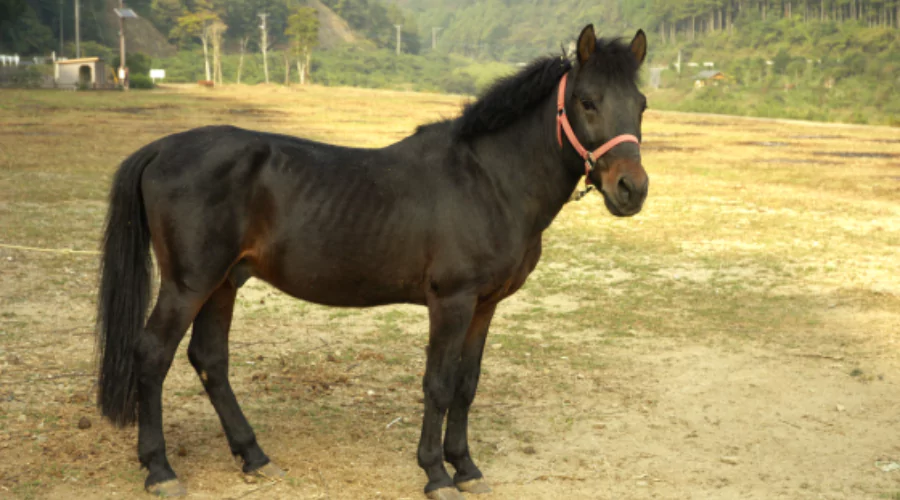
3. Taishu Horse Breed
A result of crossbreeding native Japanese horses with Thoroughbreds and a few other foreign breeds, the Taishu horse originated around the early 20th century. They were mainly developed for military horse stock and post-war agricultural needs. This breed’s adaptability and energy make it perfect for sports events and as a general riding horse, showing the hardiness of its original heritage.
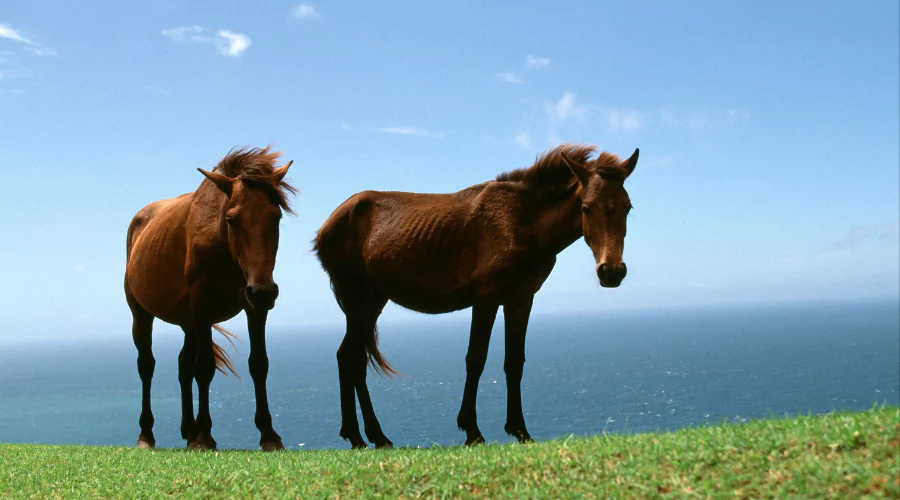
4. Misaki Horse Breed
Endemic to the Cape Muroto area, Misaki horses are famous for their power and endurance. Once at the core of the samurai’s steed, Misaki horses were deliberately bred to excel in speed and handling. Their numbers have dramatically declined over the years, a tribute to the problems experienced by some of the rarest equestrian breeds in Japan.

5. Noma Horse Breed
The Noma horse had an illustrious history as a warhorse and a ride for the imperial family. Originating in Aomori Prefecture, the Noma lineage comprises stock from Korean, Mongol, and Arabian horses. One of the lesser Japanese breeds, the Noma, is famed for its speed and agility, which served it well on ancient battlefields and is still gaining acclaim today.
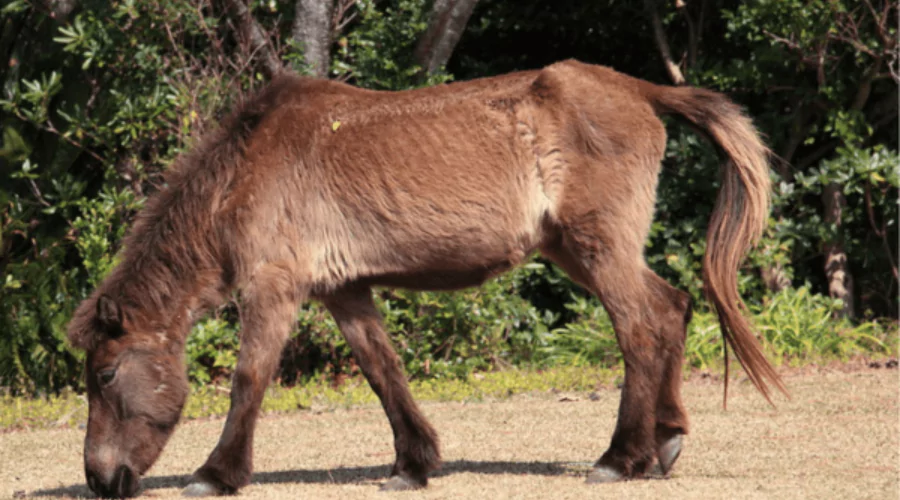
6. Tokara Horse Breed
The secluded island of Tokara gave origin to this miniature species, which currently ranks as one of the most endangered horse breeds in the world. The Tokara’s docile temperament and petite stature make it a perfect family horse, admired for its gentle demeanour and historically considered a good luck sign. Despite its beloved position, the Tokara is severely endangered, with conservation initiatives seeking to conserve its lineage.

7. Hokkaido Horse Breed
Stemming from a legacy of powerful native ponies, Hokkaido horses are sturdy and can tolerate Japan’s northernmost island’s severe, cold environment. Their unusually thick coats and cold endurance set them apart, allowing them to work in the region’s agriculture and forests. Today, they are members of numerous groups devoted to protecting the indigenous breeds of Japan.
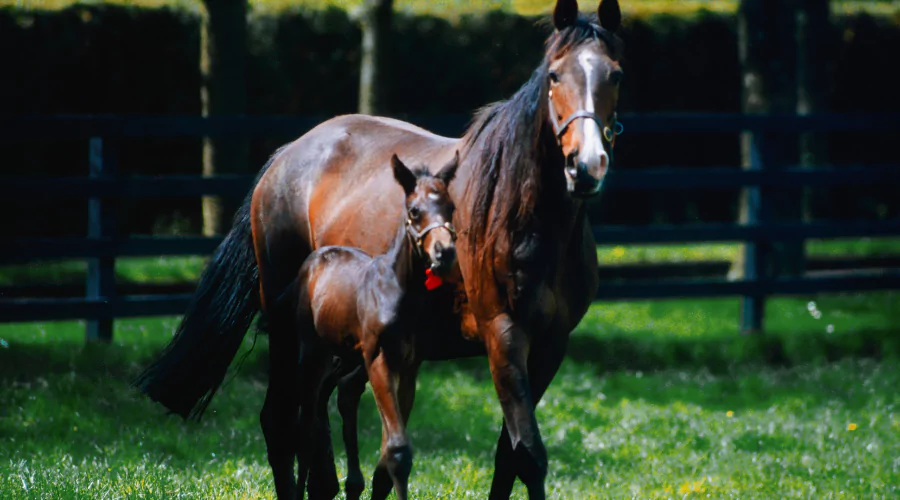
8. Thoroughbreds in Japan
The impact of Thoroughbreds cannot be neglected while analyzing Japanese horse breeds. They are not native to Japan, yet their effect on the country’s horse culture is tremendous. Imported in the late 19th century, Thoroughbreds revolutionized horse racing in the nation, leading to the founding of the Japan Racing Association and the proliferation of world-class racehorses, many competing worldwide with great success.
The Roles and Challenges of Japanese Horses Today
The traditional duties of Japanese horses have altered, and with them, the problems they confront. Once important in agriculture and transportation, modernity and automation have lessened the practical utility of these breeds. However, their cultural relevance remains undiminished, notably in rituals, festivals, and emblems of national pride. Conservation efforts are already underway, championed by government programs and private groups, to safeguard Japanese horses’ genetic variety and historical history.
The Preservation and Promotion of Japanese Equine Culture
As Japan continues to modernize, there is a strong desire to reconnect with its cultural heritage, and Japanese horse breeds are at the core of this rebirth. Promoting equine tourism, breeding initiatives to safeguard the survival of uncommon breeds, and integrating horses into eco-tourism and wellness activities are some of the measures being employed. By embracing innovation while preserving history, Japan is setting a route that aspires to safeguard its equestrian legacy and ensure its future vigour.
Conclusion:
In the realm of equestrianism, the value of a breed goes beyond its physical features; it rests in the tales it conveys, the legacy it symbolizes, and the spirit it portrays. Japanese horse breeds remain as living testaments to centuries of history, showing the tenacious resolve of the Japanese people and the eternal link between humans and horses. As we close the curtain on our inquiry, it is evident that we expand our knowledge of Japan’s rich and complex culture by cherishing these equestrian legacies.
FAQs:
Are Any Distinct Differences in the Riding Styles Associated with Japanese Horse Breeds?
The riding style—known as ‘Bajutsu’—varies between Western influences, seen in the Hokkaido horseback archery, and traditional Eastern sitting styles, encouraged by the small, sure-footed breeds on the islands. Various martial arts disciplines have also shaped riding techniques.
What Conservation Efforts are in Place to Protect Rare Japanese Horse Breeds?
The Japanese government works with local breeders and equine societies to increase public awareness, support breeding programs, and offer incentives to maintain purebred lines.
Can Tourists Interact with Japanese Horse Breeds on their Visit to the Country?
Yes, many regions offer tours and experiences that include meeting and, in some cases, riding traditional Japanese horses. From heritage sites to modern equestrian centres, there are ample opportunities for travellers to engage with these magnificent creatures and learn about their significance in Japanese culture.
You May Also Like:
Italian Horse Breeds: History, Elegance, and Diversity
Horse Saddle: Types, Parts, and Differences Between English and Western Saddles
Understanding And Managing Horse Hoof Cracks
Essential Oils for Horses
Lifespan of Horses: How Long Do Horses Live
